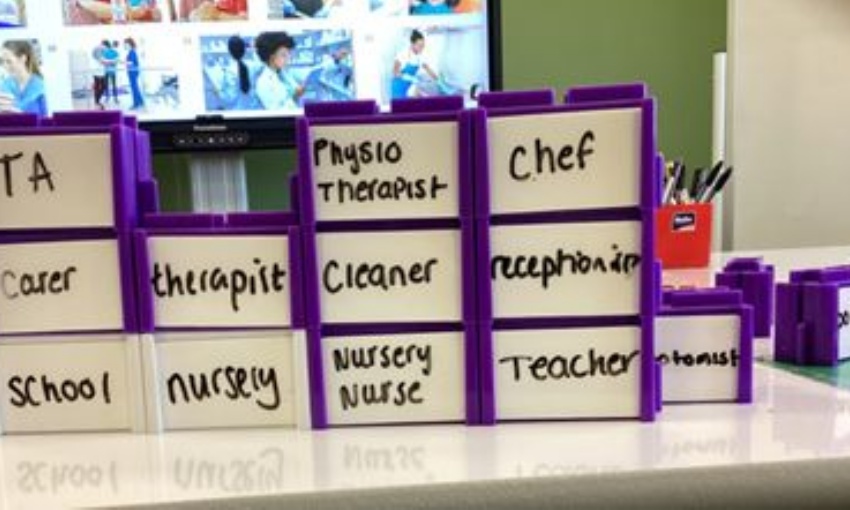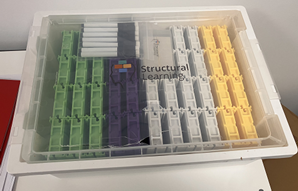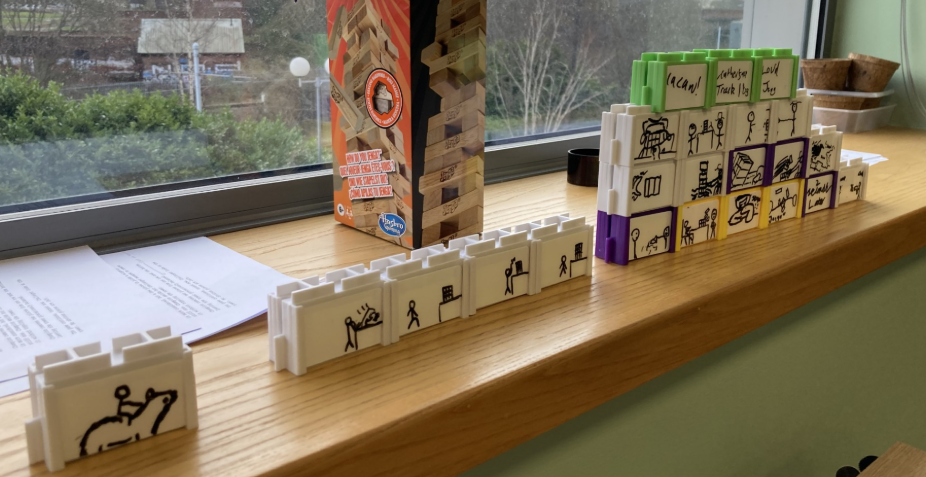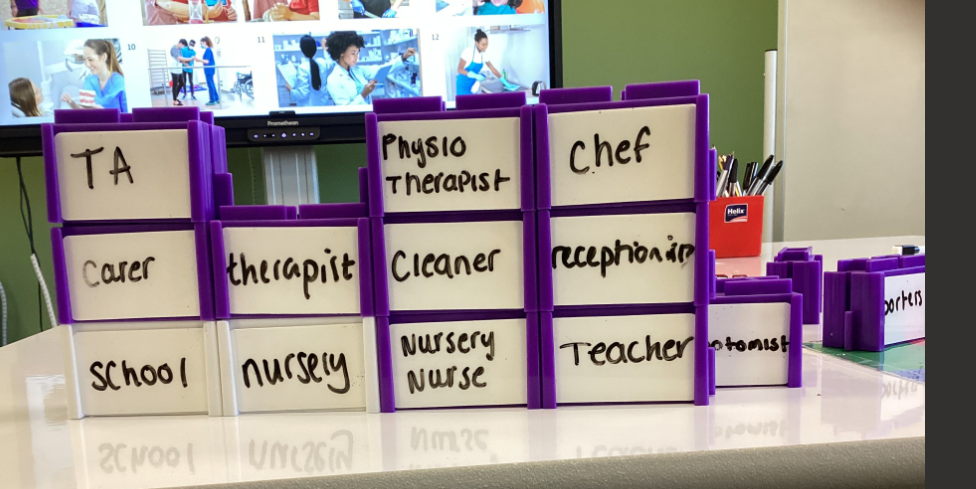Blog #1: Inclusive Models for Deliberate Practice

Pedagogical Focus: Inclusive Models for Deliberate Practice - Sarah Compai, Deputy Headteacher
As we looked at during INSET on 15th January and again in CPD in early March, Fiorella and Meyer’s 2015 research suggests educational professionals should help our learners engage in material in an active way so that it is related to what they already know, thereby changing what is presented from information (which is objective) into knowledge (which is personal). This connects to our ultimate aim of supporting students to future success and happiness in their identity and independence, health, communities and friendships, education and employment.
We agreed this was something to add to our repertoire of tools to help our learners engage with learning material in an active way:
- Selecting
- Organising
- Integrating
… we invested in these mental modelling blocks – one per campus site – and our brilliant staff have been exploring their use in our learning spaces.

Some feedback from staff so far…
Liz (Base = Nether Edge)
English: I used them to teach avoiding run-on sentences. I wrote independent clauses on yellow, punctuation on white and connectives on green. I demonstrated how you shouldn't string together the clauses, and then used either semi-colon, comma and connective or sentence ending punctuation to break them up. Then I wrote students' own clauses on the yellow blocks to help them edit their own sentences and break them up.
PSHE: I elicited examples of things that could happen online and wrote them on one colour, connected different emotions these might cause on another (and connected) then the final layer was advice you might give someone in this position. Part of teaching digital resilience; key here was that the emotion bit isn't something you seek to avoid, but that you move from that to the strategy more quickly.
Geography: Layers of the rainforest. I wrote forest floor, under-canopy, canopy and emergent layer on different colours and asked them to build it.
Barney Thomas (Base = Enterprise Works)
We used these with the Y1 Media group on Monday to make storyboards and examine different sequences for shots:

Lucy (Base = West Riding)
English: Tried it with [two classes] today. Both worked well in teaching embedded clauses and how to rearrange sentences to make it make sense.
Feedback from pupils:
They like the building blocks and it helped them to see the structure of a sentence. They enjoyed writing on the white boards. They did not like the size of the whiteboard. Some struggled with the writing of the task.
Staff Voice:
Enjoyed the practical aspect the blocks gave to the task of sentences / embedded clauses. Pupils found it difficult to write on the little whiteboards (so had the help of TAs) or could not write quickly / small enough so the pace of the lesson was hampered.
We discussed this at CPD sessions and shared ideas around ways to mitigate this aspect. Ed, for example, had printed off and stuck information to the blocks and colleagues agreed this could help with using the resource in terms of speed and logistics issues.
Ed (Base = Nether Edge)
Maths: Printed off fractions diagrams (from an established worksheet resource which already existed) and asked students to play around with how fractions work. This resulted in students actively engaging with success:

Amy (Base = Enterprise Works)
Health and Social: Two students in H and S used the blocks to link health and social care jobs with a setting. This was during a lesson on 'working in partnership' so students need to see links between professions. It was also the first learning task they engaged in, so it worked in that sense too.

Sarah (Base = Nether Edge)
PSHE: We used the blocks as a way to help a group focus positively on learning after some sessions where this hadn’t been happening as smoothly as we’d like. Students responded well and used the materials appropriately, engaging in discussion around social media use and purpose/emotions/reactions it creates.
Further information & reading:
Please see staff resources saved here: X:\KenwoodStaffShare\Pedagogy Connect Resources
And further reading on the Padlet below:
